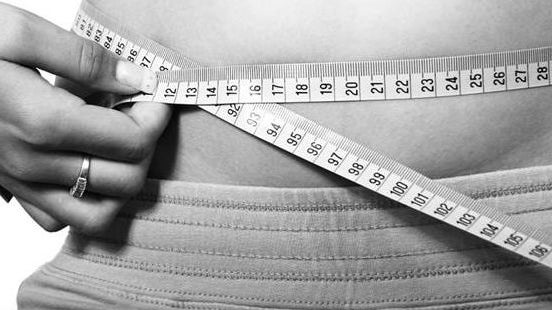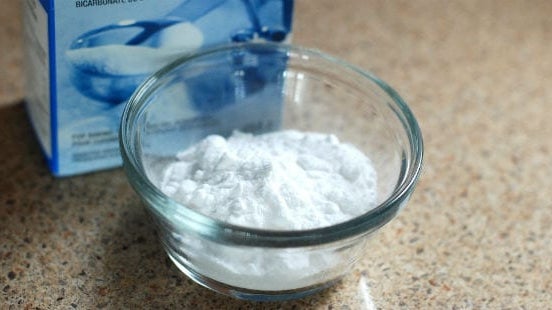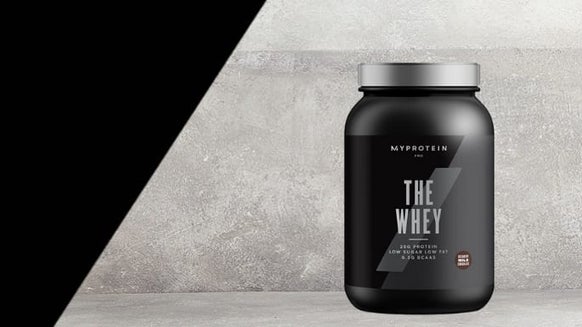
Burn Calories With Weights
Everyone understands that with cardiovascular exercise you can burn plenty of calories, and this is why people tend to use treadmills/cross trainers and other cardiovascular equipment in their quest for fat loss. You can see why because these machines actually give you a guideline around how many calories you’ve burnt while you’re using them. The visual stimulus of seeing the calories burnt figure helps you feel like you’re immediately becoming closer to your fat loss goals as you watch the calories burn before your eyes.Cardiovascular exercise predominantly uses the aerobic system, whereas lifting weights uses the anaerobic system. This means that, because lifting weights involves short bursts of high-intensity movements, the body cannot create all of the energy it needs from oxygen; it needs to gather energy from sugars instead.
How many calories does weight lifting burn?
The amount of calories burnt while lifting weights depends on a number of factors such as the individual's weight, their percentage of muscle, the exercises they are performing and the number of sets/reps or how intense the lifting session is.A male of average build and UK weight average of 84kg lifting weights (including large compounds) for half an hour can expect to burn 224 calories.A female of average build and UK weight average of 69kg lifting weights (including large compounds) for half an hour can expect to burn 180 calories.These are based on the Harvard medical school exercise list but again the amount burnt is depending on the individual’s own body mass, exercise intensity and movement choices. You will burn more calories with 30 minutes of intense compound movements such as squats and deadlifts than you will with 30 minutes of bicep curls. What are the benefits of lifting weights?
No matter your goal everyone should be lifting weights because the benefits on your body but also in your general life are second to none. So whether you’re trying to cut fat, get stronger, or build tone and definition, lifting weights is for you:1. Improved fat loss
A heavy round of strength training leads to high consumption of oxygen in the hours to days after the training session. The body using more oxygen means that it requires more caloric expenditure and leads to a high and increased metabolic rate which means more calories burned which leads to greater fat loss. 2. More muscle, means more calories burnt
When you begin strength training, you start to build lean muscle mass which uses calories more efficiently. The everyday contractions of muscles contribute to how many calories you burn in a day. The more muscles the higher the rate of caloric burn. Once you then add in more movement during the day this then begins to increase even more, from hitting your 10k steps to adding in a few strength training sessions you’ll be hitting your goals in no time. 3. Stress relief
Exercise in general releases endorphins which make you feel good. It is also found that people who strength train regularly tend to manage stress better.Strength and resistance-training in general also show an improvement in memory and cognitive function. So next time you’re looking for a little relief hit the weights.4. Increased energy
Weight/strength training helps improve the overall quality of your sleep during the night which means you feel more rested when going into the next day. It also shows that after even a minimal strength session there is an increase in energy expenditure. So when you need a little lift why not hit the barbell and lift not only your mood but your energy levels. 5. Healthy heart and bones
Strength/weight training is a great way of reducing your risk of heart disease and those who strength train are less likely to have heart disease risk factors such as a large waist circumference, high triglycerides, elevated blood pressure, and elevated glucose levels.Weight training can also improve cardiovascular health by lowering bad cholesterol and increasing good cholesterol, and in turn, this will help to lower blood pressure.It is also a great way to help you as you age, which leads to a risk of losing both bone and muscle mass. It is especially helpful for postmenopausal women are at a higher risk of osteoporosis. Strength training is an excellent way to help combat the loss of bone mass, and it decreases the risk of osteoporosis.6. Reduced risk of injury
When strength training it not only helps to strengthen your muscle and increase your bone density but reduces the risk of injury. Training helps build stronger connective tissues and tendons as well as stabilising joints. It’s also key for helping in correcting bad posture, building better form in everyday activities and preventing back injuries.
Does Weight Lifting Burn Fat?
A typical weight training session lasts between 45 and 75 minutes, but after this style of training, the body needs to repair the muscles that were used and replenish their energy too. This means that post-exercise the body continues to burn calories in the hours to days after the training session. The body using more oxygen means that it requires more caloric expenditure and leads to a high and increased metabolic rate which means more calories burned which leads to greater fat loss. Using resistance training is a fantastic way to build muscle and burn calories (fat), you won't see the instant calorie burn count that you will with cardio workouts but the long term gains outweigh the short ones with cardio. It’s also good to remember the everyday contractions of muscles contribute to how many calories you burn in a day. The more muscles the higher the rate of caloric burn. Ideally, a combination of both forms of exercise will provide the best results in terms of calories burned and body composition improvements. This is also the case when it comes to reducing calories through nutrition. It’s more beneficial for your body composition and health to reduce calories through exercise rather than just nutrition, as exercise requires the muscles of the body and the heart to function at a higher rate than usual which helps to strengthen the muscles as well as vital organs.Of course, some exercises will burn more calories than others, so if your aim is to work as intensely as possible and burn as many calories as possible while resistance training then you’ll want to edge more towards compound movements such as squats and deadlifts. The more muscle groups an exercise requires to be performed the more calories you’ll be able to burn. What will affect how many calories are burned during weightlifting?
It’s important to note that with any workout be that weight lifting or cardiovascular the calories burnt are dependent on you as an individual and many factors can affect this. Such as...1. How much weight you’re lifting
The intensity of your workout will play a big role in your calorie burn both during and after the workout. The higher the intensity (this can be manipulated through weight lifted, reps/sets and tempo/time under tension) the more calories you’ll burn. Simply put if you are lifting at 70% of your 1RM for sets of 8 reps you will be burning more calories than if you were lifting at 40% of your 1RM max for 8 reps. 2. Which muscles you’re using
Another factor to consider is the movements that you’re performing. If your gym session includes a lot of bigger compound movements or larger muscles such as your legs you will burn more calories than you would if your session focuses around isolation movements and smaller muscle groups. 3. Your nutrition
A factor which gets overlooked a lot is nutrition. The simple rule with fat loss is to be in a calorie deficit but at the same time when lifting weights, you need to make sure you are fuelling your body effectively for the activity you’re performing. You want to have a consistent flow of fuel for your body and ensure your diet is full of clean unprocessed foods to help you hit workouts hard and effectively but also to fuel your body to build more muscle post-work, which leads to a high metabolic rate. Ensuring to get enough protein, fats, and carbs is essential and eating 6 small meals a day can be an effective way of ensuring this as well making sure your body uses all the nutrients you put in.
How Many Calories Can You Burn During Other Activities?
Resistance Training
A number of calories you burn while weight lifting will depend on the individual, as it’s influenced by personal factors such as gender and weight. However, some guidelines for how many calories you’re likely to burn while weight lifting is as follow;1) A person weighing 125lbs performing 60 minutes of resistance training is likely to burn around 180 calories.2) A person weighing 155lbs performing 60 minutes of resistance training is likely to burn around 224 calories3) A person weighing 185lbs performing 60 minutes of resistance training is likely to burn around 266 calories.If a person weighing 185lbs wished to place themselves in a deficit of 500kcals per day with a goal of losing 1lb per week, an easy way to reach the deficit would be combining 1 hour of resistance training with just 234 calories worth of cardiovascular exercise, which would only take 15 minutes if running at a pace of 8mph.Cardiovascular exercise should be performed post-weight lifting in order for the resistance training strength to be sufficient. A light warm-up beforehand is always a good idea though, and you can also track these calories too, in order to leave yourself with even less to do afterwards!
Running/Jogging
Running is normally the go-to for anyone who is looking to drop a few pounds and get a little fitter, I mean anyone can do it and normally it doesn't cost you anything. some guidelines for how many calories you’re likely to burn while running are as follows;1) A person weighing 125lbs performing 30 minutes of running (12min/mile) is likely to burn around 240 calories.2) A person weighing 155lbs performing 30 minutes of running (12min/mile) is likely to burn around 298 calories3) A person weighing 185lbs performing 30 minutes of running (12min/mile) is likely to burn around 355 calories.If a person weighing 185lbs wished to place themselves in a deficit of 500kcals per day with a goal of losing 1lb per week, an easy way to reach the deficit would be combining a 30 min run and at least 30 mins of resistance training a day or alternatively 45-60 min run a day would suffice if you prefer to run.HIIT (High-Intensity Interval Training)
HIIT is another great workout that helps with both calorie burn while performing the workout but also post-workout calorie burn. HIIT is also great for those who have less time to workout as they can be short but intense, Here are some guidelines for how many calories you’re likely to burn on a high-intensity workout;1) A person weighing 125lbs performing 30 minutes of HIIT is likely to burn around 238 calories.2) A person weighing 155lbs performing 30 minutes of HIIT is likely to burn around 295 calories3) A person weighing 185lbs performing 30 minutes of HIIT is likely to burn around 352 calories.If a person weighing 185lbs wished to place themselves in a deficit of 500kcals per day with a goal of losing 1lb per week, an easy way to reach the deficit would be combining 1 30-45 min HIIT session a day maximum and if you take the intensity even further just one 20 min session a day with additional movement such as a walk could have you hitting your goals.
Take-Home Message
People often struggle to eat in calorie deficits when they’re aiming to lose weight, and part of this is due to not taking into consideration a number of calories they’re burning while performing resistance training exercises. They overcompensate with cardiovascular exercise and burn too many calories which make them frustrated and too hungry to stay committed to their routine. However, by being aware of a number of calories burned through resistance training, it’s blatant to see that the amount of cardiovascular exercise you need to perform on top of your weight training to lose fat is actually not that much. Amy has a BSHons in psychology where she was a sports scholar, as a sportswoman for over 18 years playing rugby and netball up to a national level.
She is a level 3 qualified personal trainer with a diploma in sports and exercise nutrition. She has been training in a gym and weightlifting for over 13 years, participating in CrossFit, Bodybuilding and many other events such as hyrox, triathlons and marathons.
She has a passion for extending her learning through latest studies and with a great passion for getting more women into fitness.
Amy has created programs as a coach for the last 4 years as well as around sport and fitness for Red Bull, Hyrox, Spartan UK, as well as Mental Movement UK around how fitness can help improve your mental health.
She is also a advocate for female confidence and being awareness to mental health and body confidence. She can be found here – https://www.instagram.com/dreams_and_dumbbells/?hl=en










